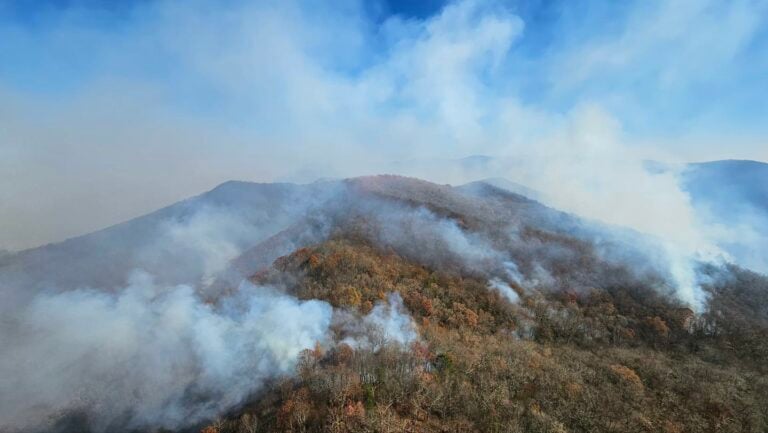by Jeff Biggers
While the TVA hand-wringing went on at Senate hearings in Washington, DC, another coal pond broke this week at the Widows Creek Fossil Plant in Jackson, Alabama.
Not that we didn’t know: Widow Creek was listed in a recent Environmental Integrity Project report as one of the worst 50 coal-fired power plant pollution “wet dumps,” because of its toxic metals.
The “spill” this time in Alabama, according to the first reports, leaked “only gypsum.”
Earlier this week, coal sludge was released into the Ocoee River Gorge in eastern Tennessee, as the TVA sought to repair a sediment dam. According to the state Department of Environment and Conservation, “Forest Service employees were walking the stream bank picking up what dead fish they could find…No live fish were seen.”
These accidents beg the question: How much longer are we going to sit back and allow crisis management to determine our energy and environmental policies?
What’s it going to take? Dead bodies?
As Appalachian Voices editor Bill Kovarik pointed out, “The effusive praise in the hearing Thursday morning Jan. 8 went beyond the standard courtesies afforded witnesses in Senate hearings, perhaps because it was clear that the TVA’s CEO was a relic of a bygone age who would need to be handled with respect and care as he was ushered out the door.”
Instead of courtesies and crisis management, we need to:
–Phase-out all wet storage of toxic coal ash.
–Inspect all toxic coal ash storage and disposal units.
–Enact federal regulation of all toxic coal ash storage and disposal.
In the meantime, the EIP report found:
* Overall pollution. Between 2000 and 2006, the power industry reported depositing coal ash containing more than 124 million pounds of the following six toxic pollutants into surface impoundments: arsenic, chromium, lead, nickel, selenium, and thallium. These pollutants are present in coal ash, prone to leaching from ash into the environment and highly toxic at minute levels (parts per million or billion) to either humans or aquatic life, or both.
* Arsenic. Alabama has the largest concentration of top 10 arsenic coal pollution dump sites, accounting for three of the heaviest concentration sites for 2000-2006: #2 Gaston Steam Plan, Wilsonville, Alabama; #3 Alabama Power Co. Gorgas Steam Plan, Parrish, AL; and #9 Alabama Power Co Greene County Steam Plant, Forkland, AL. By way of contrast, the TVA Kingston site was #20 on this list.
* Lead. The Stanton Energy Center in Orlando, FL., has the dubious distinction of being the worst plant dumping site in terms of both arsenic (see above) and lead. Another TVA site – Paradise Fossil Plant, Drakesbore, KY. – is #3 on the list of worst plants for lead pollution storage. At least 19 plants reported releasing more lead to surface impoundments than Kingston.
* Nickel. Once again, the Stanton Energy Center in Orlando, FL., tops the list with the highest level of reported nickel pollution. The #2 spot on the list goes to Duke Energy Corp Gibson Generating Station, Owensville, IN., which also ranks as #4 on arsenic and #2 on lead. At least 15 other plants disposed of nickel in amounts greater than Kingston between 2000 and 2006.
* Chromium. The #1 spot on the list goes to the J.M. Stuart Station, Manchester, OH. The Stanton Energy Center in Orlando (#3) and the Duke Energy Corp Gibson Generating Station (#4) follow closely behind it. A total of 16 facilities reported disposing of more chromium in surface impoundments than Kingston.
* Selenium. The top three spots on this list are as follows: First Energy Bruce Mansfield Power Plant, Shippingport, PA.; J.M. Stuart Station, Manchester, Ohio; and the Barry Steam Plant, Bucks, AL. A total of 15 facilities report releases of selenium between 2000 and 2006 that exceed the Kingston reports.
* Thallium. The top three spots on this list are as follows: Georgia Power Scherer Steam Electric Generating Plant, Juliette, GA: Kentucky Utilities Co. Ghent Station, Ghent, KY; and Duke Energy Corp Gibson Generating Station, Owensville, IN.







